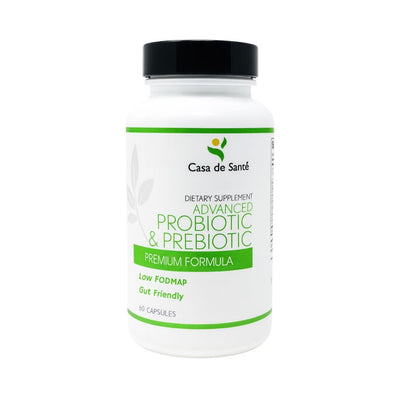Are Clif Bars Easy To Digest
Are Clif Bars Easy To Digest
Clif Bars are a popular snack among athletes and health enthusiasts alike due to their convenient size, high protein content, and variety of flavors. However, the question arises: Are Clif Bars easy to digest? The answer is not straightforward, as digestion is a complex process influenced by various factors, including the ingredients in Clif Bars and individual digestive systems. In this article, we will explore the intricacies of digestion, the components of Clif Bars, and the impact they have on digestion.
Understanding Digestion and How it Works
Digestion is a crucial process in which the body breaks down food into nutrients that can be absorbed and used as energy. The journey of food starts from the mouth, where it is chewed and mixed with saliva before traveling through the esophagus and reaching the stomach. Here, the food mixes with digestive juices, such as enzymes and stomach acid, and further breaks down into a liquid form.
The liquid mixture then moves to the small intestine, where nutrients are absorbed. Any waste products and undigested food then enter the large intestine and are excreted as feces. The process of digestion can vary from person to person and can be influenced by several factors, such as age, gender, genetics, and overall health.
It is important to note that the digestive system is not just responsible for breaking down food, but also plays a crucial role in the immune system. The gut is home to trillions of bacteria, known as the gut microbiome, which help to protect against harmful pathogens and support overall health.
However, an imbalance in the gut microbiome, known as dysbiosis, can lead to a range of health issues, including digestive disorders, autoimmune diseases, and mental health problems. Therefore, maintaining a healthy gut through a balanced diet and lifestyle is essential for overall well-being.
What are Clif Bars?
Clif Bars are energy bars that were originally created for athletes but have since become popular among people who want a quick, convenient, and healthy snack. They are made with a blend of ingredients, including organic rolled oats, organic soybeans, and organic dried fruits and nuts. They also contain vitamins and minerals, such as vitamin A, vitamin C, and calcium, making them a nutritious option for a mid-day snack or as pre-workout fuel.
Additionally, Clif Bars are known for their commitment to sustainability. The company sources organic and non-GMO ingredients, uses renewable energy in their production facilities, and has implemented waste reduction and recycling programs. They also support various environmental and social initiatives through their Clif Bar Family Foundation. So not only are Clif Bars a healthy snack option, but they also align with values of sustainability and social responsibility.
The Ingredients in Clif Bars
The ingredients in Clif Bars can impact how easily they are digested. Clif Bars come in over 20 varieties, including flavors like chocolate chip, peanut butter banana, and blueberry crisp. The main ingredients in Clif Bars include:
- Organic Brown Rice Syrup
- Organic Rolled Oats
- Soy Protein Isolate
- Organic Cane Syrup
- Organic Peanut Butter (Peanuts)
- Organic Roasted Soybeans
- Organic Soy Flour
- Organic Peanut Flour
Their nutritional value varies depending on the flavor, but they all contain a similar blend of macronutrients, including protein, carbohydrates, and fat. The ingredient list can also include various additives such as natural flavors, preservatives, and emulsifiers, which may impact digestion in different ways.
It's important to note that Clif Bars are marketed as a convenient and healthy snack option, but they do contain a significant amount of sugar. The organic cane syrup and brown rice syrup used in the bars are both forms of added sugar, which can contribute to weight gain and other health issues if consumed in excess. It's recommended to consume Clif Bars in moderation and as part of a balanced diet.
Nutritional Value of Clif Bars
One Clif Bar typically contains 250-270 calories and 10 grams of protein. They are a source of dietary fiber, with an average of 5 grams per bar, and provide about 5-10% of the daily recommended intake of vitamins and minerals. Clif Bars are marketed as a healthy snack option, but their high sugar content, averaging around 20 grams per bar, can be a point of concern for some individuals.
It is important to note that Clif Bars are not intended to be a meal replacement, but rather a convenient and portable snack option. They are often used by athletes and outdoor enthusiasts as a quick source of energy during physical activity. However, individuals with certain dietary restrictions, such as those with gluten or soy allergies, should be cautious as many Clif Bar flavors contain these ingredients.
The Benefits of Eating Clif Bars
Clif Bars have several benefits, including their convenience and nutritional value. They are easy to carry around, and their high protein content makes them a suitable snack for after a workout or as a quick breakfast. The inclusion of vitamins and minerals also makes them a more nutritious option than many other snacks on the market that may contain empty calories.
Additionally, individuals who follow a vegetarian or vegan diet can safely consume Clif Bars, as they do not contain any animal products.
Another benefit of Clif Bars is that they come in a variety of flavors, catering to different taste preferences. From chocolate chip to peanut butter to blueberry crisp, there is a flavor for everyone. This variety also helps prevent boredom and monotony in one's diet, making it easier to stick to healthy eating habits.
Furthermore, Clif Bars are made with organic ingredients, which means they are free from harmful pesticides and chemicals. This not only benefits the consumer's health but also supports sustainable and environmentally friendly farming practices.
Factors that Affect Digestion of Clif Bars
Several factors can influence how easily Clif Bars are digested. These include the ingredients in the bar, individual digestive systems, and the context in which the bar is consumed.
Some individuals may be sensitive to certain additives, such as preservatives or natural flavors, making Clif Bars harder to digest. In contrast, others may have no issues digesting them. The consumption of Clif Bars within a larger meal can also affect digestion, as they may take longer to empty from the stomach.
The texture of Clif Bars can also play a role in digestion. Bars that are harder or more dense may take longer to break down in the stomach, leading to discomfort or bloating. On the other hand, softer bars may be easier to digest for some individuals.
Additionally, the timing of consumption can impact digestion. Eating a Clif Bar too close to bedtime may disrupt sleep, as the body works to digest the bar while lying down. It is recommended to consume Clif Bars at least a few hours before bedtime to allow for proper digestion.
Common Digestive Issues with Clif Bars
Some individuals may experience digestive issues after consuming Clif Bars, such as bloating, gas, or stomach discomfort. These symptoms can be attributed to various factors, including the high fiber or sugar content, individual sensitivity to certain ingredients, or underlying digestive conditions.
It is important to note that not all individuals will experience digestive issues after consuming Clif Bars. In fact, many people find them to be a convenient and satisfying snack option. However, if you do experience discomfort after consuming Clif Bars, it may be helpful to try a different flavor or variety, or to speak with a healthcare professional to determine if there are any underlying digestive issues that need to be addressed.
Tips for Improving Digestion of Clif Bars
There are a few tips that individuals can use to enhance their digestion of Clif Bars. These include eating them in moderation, consuming them with water or other non-caffeinated beverages, and making sure to chew thoroughly to aid with digestion.
Consuming Clif Bars with foods that are easy to digest, such as bananas, can also aid in digestion. Finally, individuals who experience digestive issues may benefit from switching to another snack option, such as fresh fruit or yogurt, to improve their overall digestive health.
Another tip for improving digestion of Clif Bars is to avoid consuming them on an empty stomach. Eating a small meal or snack before consuming a Clif Bar can help to stimulate the digestive system and improve the body's ability to break down the bar.
It is also important to pay attention to the ingredients in Clif Bars, as some individuals may have sensitivities or allergies to certain ingredients. Reading the label and avoiding bars with ingredients that may cause digestive discomfort can help to improve overall digestion and prevent discomfort.
Who Should Avoid Eating Clif Bars?
Individuals who have certain digestive conditions, such as inflammatory bowel disease or celiac disease, may need to avoid Clif Bars due to the ingredients and additives present. Those with a sensitivity or allergy to any of the components in Clif Bars, including soy or peanuts, should also avoid consuming these bars and opt for other snack options.
It is also important to note that Clif Bars are high in calories and sugar, which may not be suitable for individuals who are trying to manage their weight or blood sugar levels. Additionally, athletes or individuals who engage in high-intensity workouts may require more protein and carbohydrates than what is provided in a single Clif Bar.
However, for individuals who are looking for a quick and convenient snack option, Clif Bars can be a good choice. They are made with organic ingredients and are free from artificial preservatives and flavors. It is always important to read the label and consult with a healthcare professional before adding any new food to your diet.
How to Incorporate Clif Bars into Your Diet
Clif Bars are a convenient and nutritious snack option that can be used in several ways. They are an excellent option for athletes who need a quick boost of energy before, during, or after a workout. Additionally, individuals can use them as an on-the-go breakfast option or to curb hunger between meals.
It is essential to ensure that Clif Bars are consumed in moderation, within the context of a healthy diet, and do not substitute whole foods such as fruits, vegetables, and lean proteins.
Alternatives to Clif Bars for Easy Digestion
For individuals who experience digestive issues with Clif Bars, several alternatives can aid in digestion. These include fresh fruit, yogurt, smoothies, or boiled eggs. These options are lower in sugar, easier to digest, and provide similar nutritional value to Clif Bars.
Conclusion: Are Clif Bars Right for You?
The decision to consume Clif Bars ultimately depends on an individual's specific dietary needs and preferences. While they offer convenience and nutritional benefits, some individuals may experience digestive issues after consuming Clif Bars, making them a less desirable snack option. Evaluating individual digestive health, overall dietary patterns, and specific dietary restrictions (i.e., vegan or vegetarian) can help determine if Clif Bars are an appropriate addition to a person's diet.
If you are unsure whether Clif Bars are right for you, it is recommended to discuss any concerns with your healthcare provider or registered dietitian to determine the most appropriate dietary choices for your overall health and wellness.




























